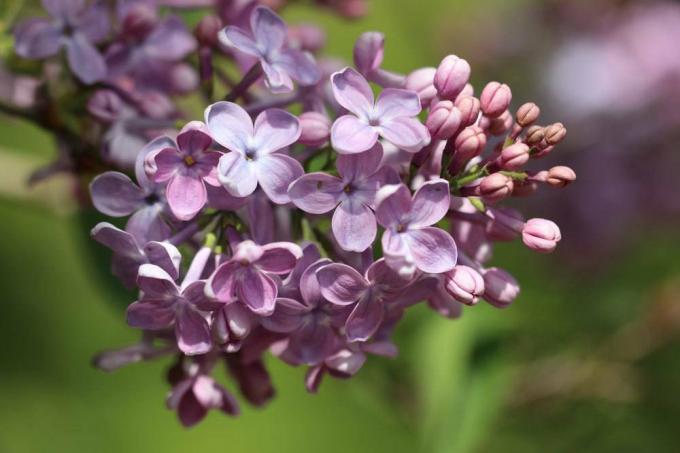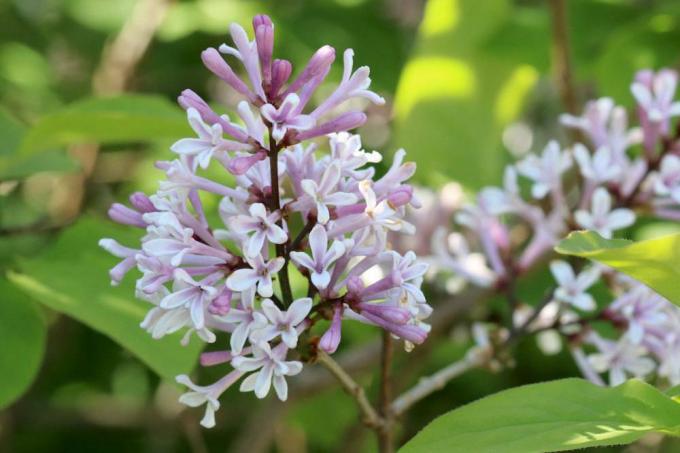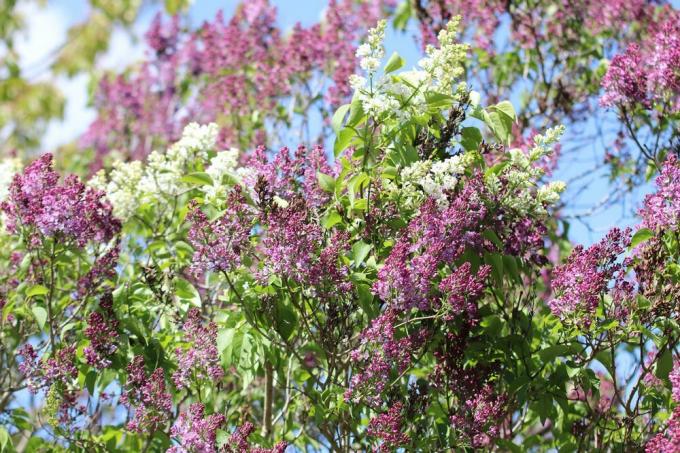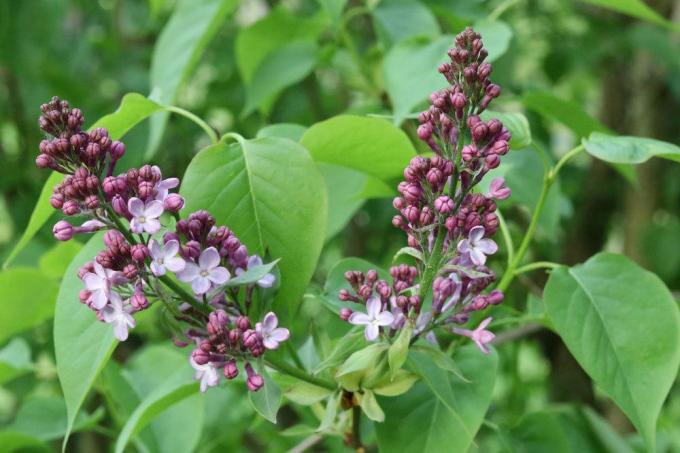
table of contents
- Special ingredient in lilac
- Lilac in medicine
- Risky self-medication
- Ingredients harmful to health
- GIZ Nord warns against consumption
- Retail products are harmless
- Slightly toxic to dogs and cats
- Safe for horses
In the course of its evolution, lilac has refrained from developing typical defense mechanisms such as thorns, stinging hairs or sharp leaf edges. Instead, the Lilac tree to an aggressive spread via runners, which earned it a place on the black list of invasive plants. Thus the question is obvious to what extent a Syringa vulgaris defends itself with toxins from its enemies. Would you like to know if lilacs and lilac blossoms are poisonous? Then read well-founded answers here.
Special ingredient in lilac
Questionable ingredient urges caution
As early as 1841, scientists isolated a special glycoside from bark, leaves and flowers, which occurs primarily in Syringa vulgaris. Based on the botanical name of the lilac, this substance was called syringin. Glycosides are widespread in the plant world. The organic compounds are mostly a double-edged sword, because they combine both a toxic effect and the suitability for medicine.
Lilac in medicine
Lilacs in Medieval Medicine
As can be seen from the traditions, all parts of the plant were used in medicine in the Middle Ages. Administered in the correct dosage, the plant was said to have antipyretic, anti-inflammatory and analgesic effects.
For these complaints, plant parts of the lilac were used:
- Leaves from the lilac tree as a tea to reduce fever
- Lilac blossom tea for indigestion relief
- Crushed bark doused with boiling water to cure hiccups
- grated lilac tree leaves to stop bleeding wounds

For diseases such as rheumatism and gout, the healers used an oil extract from dried flowers. A bath made from leaves and flowers was also recommended to relieve pain in the limbs.
Risky self-medication
In modern medicine and homeopathy, syringin has not established itself as an active ingredient due to the lack of scientific evidence regarding its medicinal properties. Self-medication is strongly discouraged. Although the lilac-specific glycoside is not explicitly declared as a toxin, the effects of oral ingestion cannot be foreseen.
Fatally, glycosides are often stored in plants as non-toxic substances. If the plant cells are destroyed when you harvest bark, leaves or lilac blossoms, syringin can become toxic through contact with other plant substances.
Ingredients harmful to health
In addition to syringin, lilac has other juices flowing through it that are not beneficial to human health. Although toxins are not mentioned here, the following ingredients still require careful handling of the lilac tree.
- Essential oils cause breathing difficulties in those with fragrance allergies
- Anisaldehydes are suspected of causing skin allergies on contact and headaches when consumed
- Contains alpha-pinene in a very low concentration, but still has the GHS label “Attention”

The bitter substances found in the lilac bush, on the other hand, are not toxic. Rather, they serve here as protection against excessive consumption, which can lead to symptoms of poisoning in humans. Leaves and flowers taste extremely bitter, so that adults are hardly at risk. In children, on the other hand, the sense of taste is not yet fully developed, so that the bitter substances as a protective mechanism are ineffective in small children.
GIZ Nord warns against consumption
GIZ Nord advises against consumption
Even without a GHS hazardous substance label, the experts from the Poison Information Center North confirm that lilacs are harmful to health. This warning is based on 62 reported cases of consumption between 1996 and 2010. In 8 cases there were sometimes violent abdominal cramps, nausea and diarrhea. Only children were affected.
In view of these practical findings, one should refrain from consuming candied lilac blossoms, although they are sometimes praised as a delicacy. The sugar covers the bitter taste so that the protective mechanism explained does not work in adults either.
Retail products are harmless
Products from specialist retailers are harmless
The cosmetics industry has discovered the seductive lilac scent for itself. After it was previously problematic to extract the natural scent of flowers, modern CO2 extraction paved the way for a lilac extract. From the hand of experts and with a concentration of 0.1 to 0.5 percent in aromatic cosmetics, you can enjoy the vitalizing lilac scent as a perfume or skin cream.

Slightly toxic to dogs and cats
Syringin and other ingredients in lilac have a similar effect on dogs and cats as they do on humans. In view of their smaller body size, even smaller amounts can be toxic to pets after consumption. So don't let your four-legged house mates nibble on leaves, flowers and twigs all the time. Of course, there is no need to worry if a few parts of the plant are eaten. Typical symptoms of poisoning, such as salivation, circulatory problems and vomiting, only occur when Syringa vulgaris is consumed in large quantities.
Hare and rabbits do not touch lilacs
In contrast to dogs and cats, hares and rabbits have a finer sense of taste. As numerous owners and breeders report, the small rodents ignore branches, leaves and flowers. The bitter substances and essential oils contained in it obviously spoil their appetite. The lilac bush is therefore recommended as a suitable plant for enclosures.

Safe for horses
Trees and bushes border horse paddocks and paddocks, which horses like to nibble on when they are bored. If it is a lilac tree, you can leave your horse alone. In numerous boarding houses and riding stables, the riding horses are offered lilac branches as nibble branches.
This not only provides variety in everyday life, but also partially covers the need for fiber-containing food. The German Equestrian Association agrees with this view and names the lilac tree as an unproblematic border planting of horse pastures.

